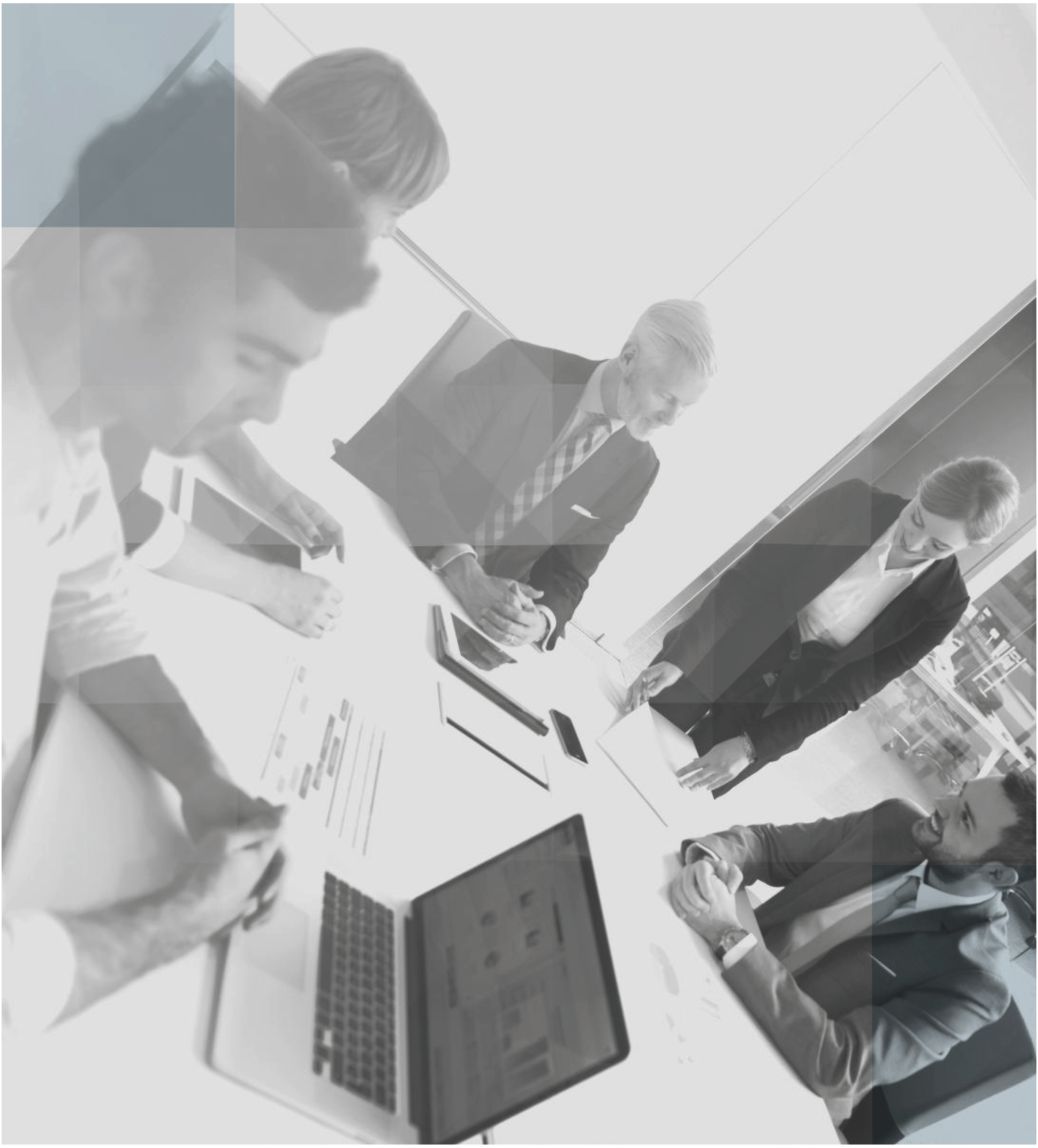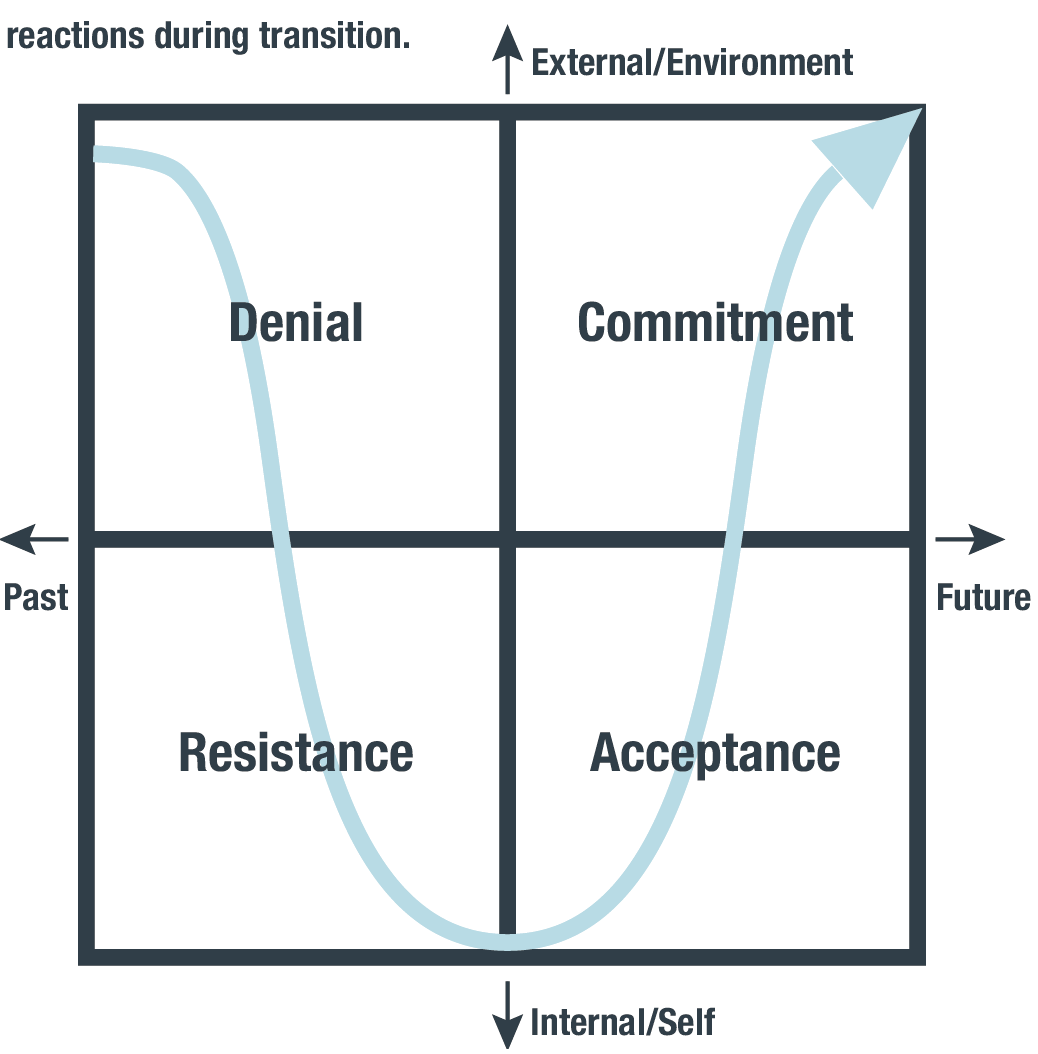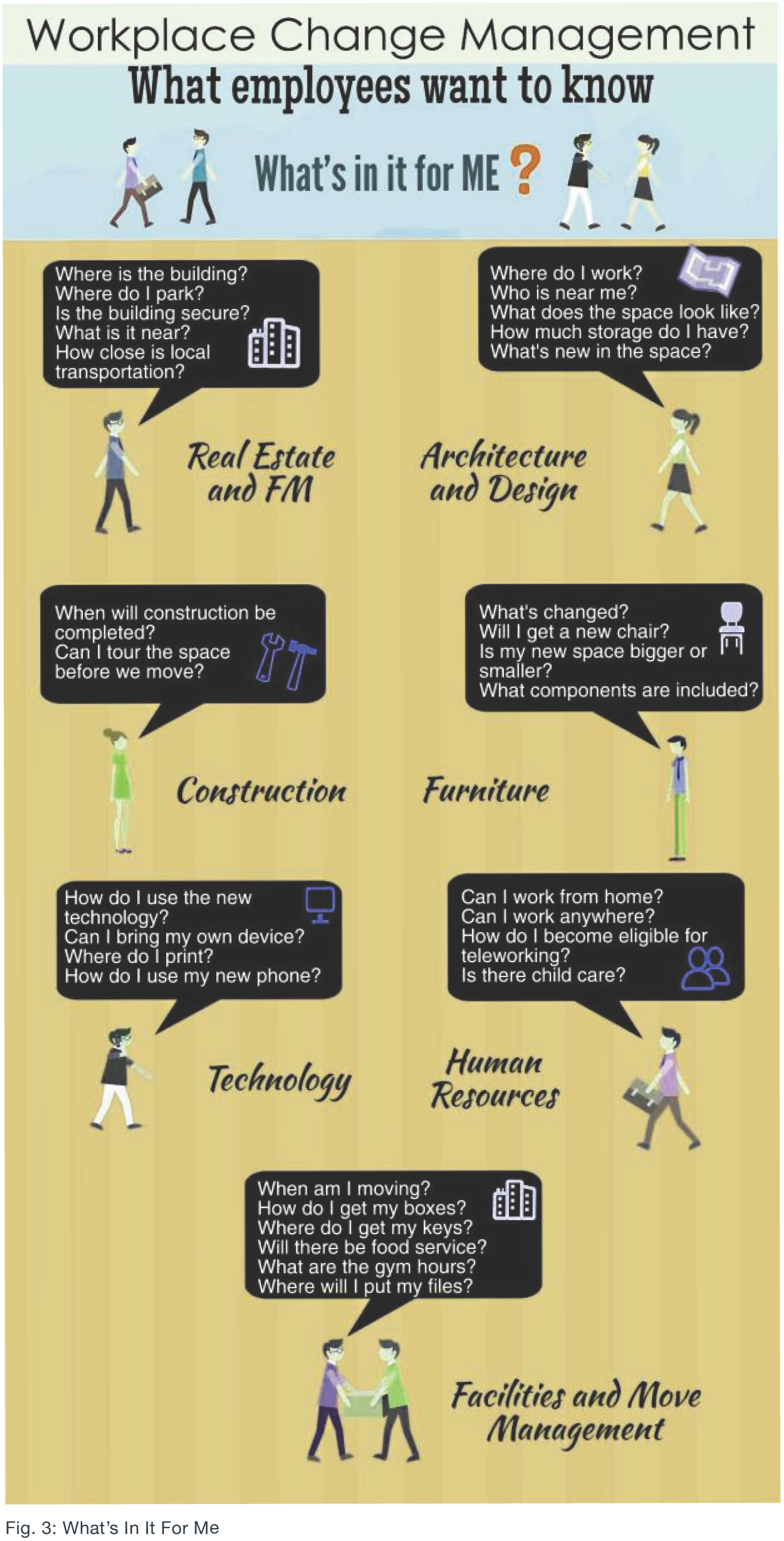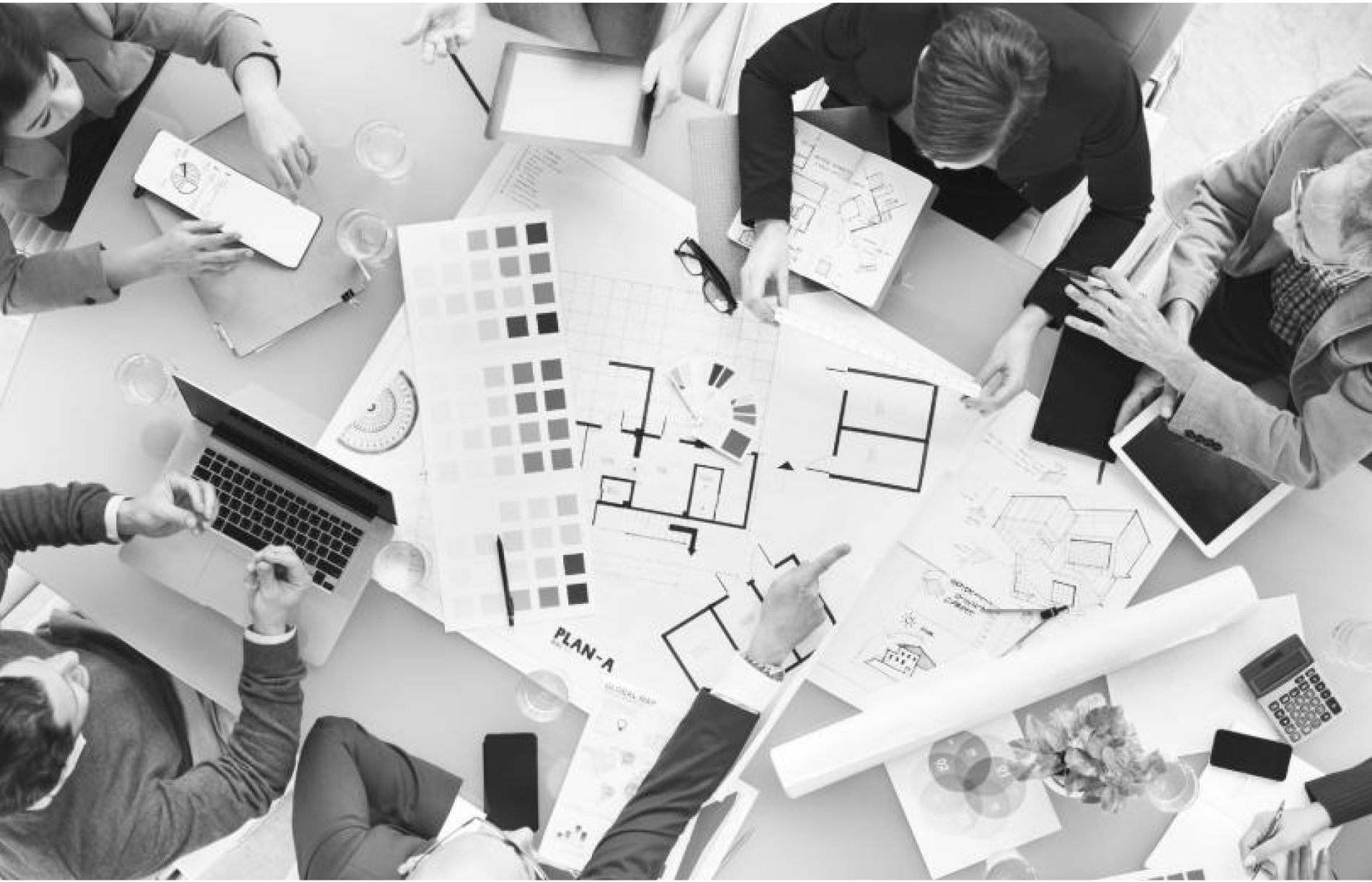Workplace Change Management: An Overview

People have a natural resistance to change. Despite good business reasons for transforming the workplace, employees often feel vulnerable during the process. Workplace change management should be executed carefully and thoughtfully. The goal is to create a well-crafted program that provides support for employees, assisting them in getting back to work quickly to avoid productivity loss. This paper discusses the importance of workplace change management and provides basic steps to success.



WORKPLACE CHANGE MANAGEMENT: AN OVERVIEW
Helping leaders prepare people for their new workplace.
INTRODUCTION
People have a natural resistance to change and even though there are good business reasons for transforming the workplace, often, workers feel vulnerable with the process. Consequently, workplace change management should be executed very carefully and thoughtfully. The goal is to create a well-crafted program that provides support for employees about their new workplace and assists them in getting back to work as quickly as possible to avoid any productivity loss. This paper will discuss the importance of workplace change management along with basic steps to success.
What is workplace change management?
Change management helps leaders prepare people for their new workplace, engage their employees throughout the change, and drive positive outcomes. People often have a fight-or-flight response to change as shown in the Change Curve, Figure 1.

Fig. 1: Change Curve
This curve is a popular model that demonstrates the different stages of how people react to change; from denial to resistance to acceptance to commitment. The change management process helps employees move through this model and shift their thinking and behavior from resisting change to committing to their new work environment. It is a structured approach that coincides with the workplace
strategy, design and construction schedule. The idea is to achieve a unified cultural transition for employees from their current work environment to their future workspace.
The five steps in a workplace change management program are outlined further in this paper. They are:
- Create the business case for change
- Develop a common vision
- Communicate for buy-in
- Manage the change
- Adopt and adjust to the change
Why do we need change management?
Change management helps employees get back to work quickly and effectively and in return reduce costs and minimize productivity loss. People and space represent the two largest portions of a company’s budget and a smooth change management program helps optimize these assets by decreasing costs and retaining high performers. People by nature are adaptable and can adjust to new workplaces whether they like them or not. However, without a well thought out change program, workers may not be as efficient and productive in the new space as in the old. Change management ensures that employees are productive and performing to their best capabilities.
A well-planned change management program reduces stress, improves employee engagement and well-being along with their overall satisfaction with the company. Workers want to feel valued, respected and appreciated and change management helps them become more satisfied with their new workspace and, in general, the employee experience. That’s why change management efforts led by trained professionals can deliver a work environment where employees can be productive and embrace the new space from day one.
CHANGE MANAGEMENT PROCESS
Start Change Management early in the project process
When to start change management?
Preferably, the change management process starts at the beginning of the workplace strategy development and design process, Figure 2, Change Management & Design Process.
The purpose of change management is to gain leverage and maximize the performance of the employees throughout the entire timeframe of the workplace project. Starting at the beginning of the process helps save money and avoid costly change orders along with unhappy, disengaged and unproductive staff. Change management practices are designed to uncover any leadership and staff concerns with the new workplace environment. Early discovery of controversial issues and employee concerns means they can be resolved sooner rather than later to prevent unnecessary future changes in architectural and construction plans. Deferring change management later in the design process runs the risk of budget increases, costly construction modifications, delays and dissatisfied or underperforming employees.
Who is involved?
Typically, the change management program is led by an independent third party or an employee of the company experienced in change management. That person works with both internal departments along with external partners including the real estate broker, architect, contractor, furniture supplier and others as applicable depending on the change. Input from various internal functions of the organization like human resources, facilities and real estate, information technology, marketing and communications helps focus on the many facets of corporate life and culture including how change will be employed, accepted and adopted.
When planning a workplace change, many companies take advantage of this opportunity to upgrade technology,
introduce new programs and advance their culture. This is an appropriate time to re-examine programs and processes, deploy new technology, review company values, shift culture, and improve the employee experience and amenities being provided. Coordination of these multiple change efforts involves careful planning and deserves focus to ensure that all the projects are interconnected in a unified approach for best results.

Five steps to managing workplace change
1. Create the business case for change
The change program begins with understanding the organization’s motivation for the change and its ability to successfully adapt to that change. It’s very important that company leaders are “transparent” and “honest” about the reasons and capacity for change. A thorough analysis of the risks and opportunities associated with the proposed change and an understanding of the gains, costs and threats of making or not making the change is essential. This step includes a readiness assessment of the organizations capacity to execute change. Readiness means being prepared and the assessment is an examination of the organizations attitudes and resources required to make the change happen successfully. The assessment is conducted using a survey which allows employees to give feedback about their outlook and aptitude for the workplace change. This, in turn makes the employees feel engaged and part of the change process from the start.
There are many drivers for workplace change like economic conditions, regulatory changes, mergers and acquisitions, reorganization, expansion, growth, technology advances, employee attraction and retention, lease expiration, or countless other causes. Whatever the reasons are, they should be carefully examined to develop the business case using data rather than instinct to create the return on investment and success measures for the workplace transformation.
The business case sets the stage to create the common vision (Step 2) and obtain buy-in throughout the communication strategy (Step 3). The success measures help make the change stick (Step 5) by assessing the results to ensure adoption to new ways of working and making adjustments as needed. Some examples of success measures include return on investment, density of occupation, space utilization, pre and post-occupancy survey, productivity, employee satisfaction, employee engagement, turnover, building costs, meeting room usage, and more.
2. Develop a common “vision”
As Peter M. Senge once said “people don’t resist change, they resist being changed.” The reality is that most companies jump head first into workplace design projects without engaging workers, ignoring their needs, creating doubt and uncertainty. It’s best to take a team approach to create a common vision and spell out how the future will be different from the past and make that vision a reality.
Evidence-based design research in the workplace is essential in creating the vision and aligning the business culture to the design. As organizations move toward a “work anywhere” approach, and the creation of more exciting creative spaces that foster teamwork and well-being, it is important to understand what the research says to avoid
costly design mistakes. Research can also facilitate better communication with employees about the basis and reasons for workplace design decisions to minimize their concerns.
For example, if a company is moving from closed to open offices for all employees including executives, people will be concerned about noise levels and distraction. Research found in Dr. Sally Augustin’s publication titled “Applying What Scientists Know About Where and How People Work Best” 1 references literature about the science of designing acoustically sound open plan space to minimize distraction. This bibliography of workplace design topics is a great tool for explaining the reasoning behind workspace choices and help leaders make better informed decisions. It is vital to educate and involve employees in design selection to achieve acceptance and agreement of their future space. Having an executive sponsor and including department leaders up front in the planning and design process will result in a smoother transition from the old to the new workplace.
3. Communicate for buy-in
Change communications ensures that the people affected by the change understand the change and are prepared for the transformation. The “Business Case” developed in Step 1 and the “Vision” created in Step 2 form the basis of the communication messages and explains the “value” of what employees will gain in their new workspace.
Effective communications is multi-pronged, targeted to specific audiences and maintained throughout the life of the project. For employees, it’s all about “What’s in it for Me,” Figure 3.
They expect clear, concise, honest and consistent messages. The earlier the communications the better as it takes time for people to adjust mentally to a workplace change as shown in the Change Curve, Figure 1. Workers want to know about the new building, local amenities, furniture, technology, space design, construction and move schedule and, in general, how the transformation affects them.
Communication methods vary and are targeted for special audiences to head off rumors and resistance to change. They can include face-to-face meetings, virtual newsletter, frequently asked questions, web cams of construction, virtual tours, videos, town hall meetings, focus groups, round table discussions and more depending on the organizations requirements.
“People don’t resist change, they resist being changed.”
—Peter M. Senge

4. Manage the change
The best way to manage the change is to appoint and empower a committee of changes agents who advocate for their departments and for the improvements coming in the new space. These change agents are an integral part of the change process and act as a link, selling the change, helping to dispel rumors and bringing insights and observations back to the change management and project team. Appointing resistors and detractors as change advocates will aid in testing the merits of the change approach. This can be difficult in the beginning but will pay off in the long run as resistors become highly influential and loyal advocates.
Managing and planning activities and events like pilots, mock-ups, hard-hat tours, room-naming contests, purge campaigns, furniture, food and coffee sampling are an important part in gaining support from employees and reducing their anxiety levels, Figure 4, Change Deliverables.
5. Adopt and adjust to the change
Change is deemed successful when it becomes the “new normal.” A review of the change program helps leaders understand how the change met planned outcomes and how well individuals adjusted to their new workplace. Data and metrics established in Step 1 are used to evaluate success,
make adjustments and avoid going back to the way things were. Change management is ongoing and data collected to support the workplace transformation should endure beyond the move for continuous improvements. As a company evolves so does its business strategy and subsequently its workplace strategy and data can support the organization’s leaders in brainstorming possible enhancements and innovations
To make the change stick, leaders must model their actions to achieve the desired culture established in the “common” vision (Step 2). Employees are more apt to follow when management is leading the way and exhibiting new ways of working and the desired conduct. Workshops or guidance sessions are a great way for both managers and employees to understand the preferred new behaviors and workplace practices. They can be targeted for specific audiences and topics like “managing distributed teams,” “collaborating with colleagues,” “flex fundamentals for employees,” “sharing knowledge across teams,” and “welcome to your new workplace.” Training programs should continue long after the move and continually improve and evolve with the workplace strategy.
EXAMPLES OF CHANGE COMMUNICATIONS AND DELIVERABLES
| Face to Face Communication | General Communication | Events | Digital Communication | Furniture | Employee Amenities |
| Focus groups | Frequently asked questions | Contests - Move slogan - Room names | Web cams of construction | Mock ups | Coffee/Food service samplings & voting |
| Round table conversations | Workplace etiquette guidelines | Purge Campaign | Virtual tours | Furniture samples with voting | Surveys |
| Brown bags | Wecome packet | Hard hat tours | Intranet site newsletter | Furniture how-to use videos | Fitness Center equipment sampling |
| Town hall meetings | Technology how-to guides | Beam signing | Change rediness Surveys/pulse check | Video of furniture layout or 3D | Local amenity discount coupons |
| Training sessions | Nearby Amenities/ Transportation/ Child Care | Time Capsule | Videos | Treadmill desk sampling & policy | AV and new equipment testing |
Move-in celebration!
Fig. 4: Change Deliverables

How to pursue change management?
It’s best to utilize a third party not connected to the project team that has proven experience managing workplace transformation projects along with a comprehensive understanding of workplace strategy and the design process. A strong focus on people and the ability to connect, engage and communicate with employees in various media is essential. No matter how well designed the workplace, the success of the project will ride on the acceptance from the staff. And, a third party with a history of managing change can ultimately facilitate that success. An independent source yields the greatest value because that source can deliver the hard messages, remain impartial and relay employee reactions to the change without putting staff at risk. They face similar issues with every project completed and can identify potential concerns and assist with resolution before the small matters become problematic. Using proven
processes, an outside source can apply their vast change management experience to guarantee project success and employee satisfaction with the new workplace.
Seven keys to a successful change management program
- Early launch
- Data and evidence-based design research to back up business decisions, analyze success and make the change stick
- Senior level sponsorship that is engaged in the project
- Change agents or ambassadors actively representing departments
- Communication plan that is well thought out with participation by employees and change agents
- Change activities and events such as mock ups, pilot programs, tours, special events, welcome packets, etc.
- Experienced change manager leading the project
Summary
When done right, a thoughtful workplace change program will align people and place to the desired business outcomes, culture and goals. Change management can discover controversial “hot button” issues and, in turn, ultimately save costs and increase employee performance. A successful change management program will make employees feel valued and consequently more productive and more likely to stay with the company long after their move to the new workplace. The easier you make the transformation for employees, the quicker your company will benefit and the more likely it will be successful.
Diane Coles-Levine, MCR brings over 25 years of experience in change management, corporate real estate, workplace strategy, facility management and business continuity to her role as principal at Workplace Management Solutions. Coles-Levine is a co-founder of and senior advisor to IFMA’s Workplace Evolutionaries (WE) group, a vibrant global community of practice focused on increasing workplace innovation and consciousness. In the corporate world, she spearheaded the innovative workplace strategy and award winning AWESOME project to save costs, improve work-life balance and attract and retain employees. She was the editor and co-author of the award-winning IFMA Foundation book about the workplace entitled “Work on the Move: Driving Strategy and Change in Workplaces,” for which she was recognized as an IFMA Distinguished Author in 2012.
A unit of Kimball International ©2015 Kimball International, Inc.
1600 Royal Street Jasper, Indiana 47549
800.482.1818 kimballoffice.com
Want even more Content?

Since you’re already a user, you know that IFMA’s Knowledge Library offers all FM content in one place. But did you also know that by signing up via email to become a registered user, you can unlock even more resources?
Signing up via email for registered access within the Knowledge Library brings more content and functionality to your fingertips. Expect to grow your facility management knowledge, career and network faster than ever before.


